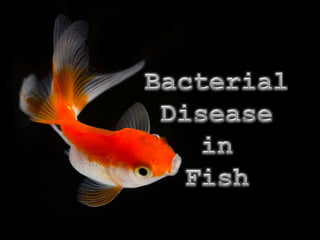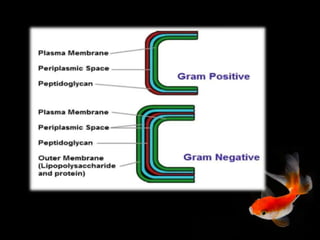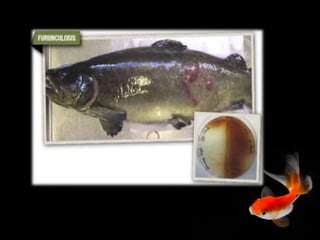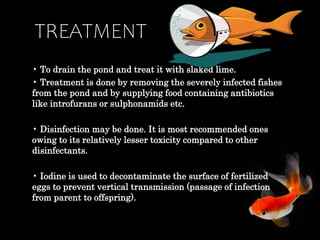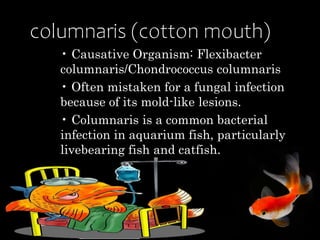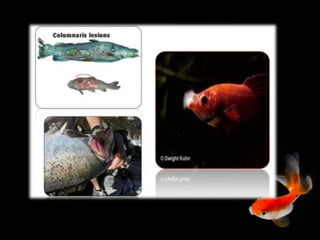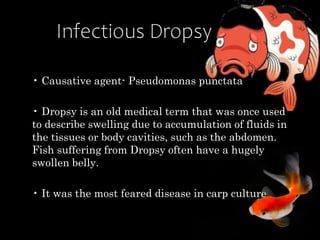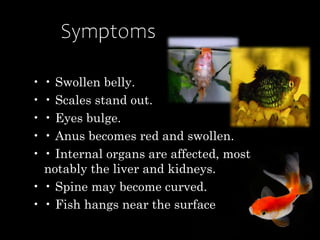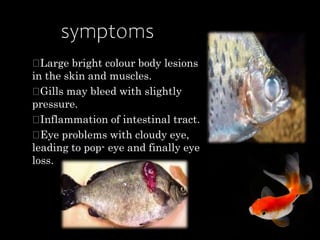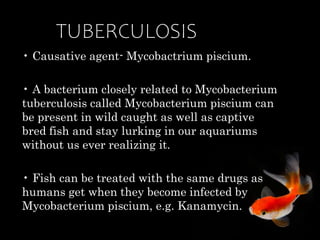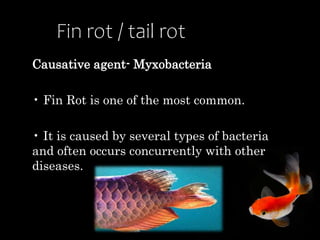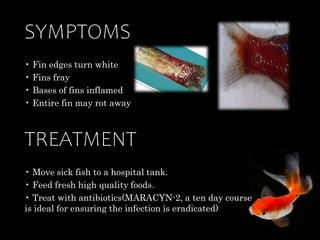Bacteria are common pathogens that can cause several diseases in fish. The document lists 7 common bacterial diseases: furunculosis caused by Aeromonas salmonicida, columnaris caused by Flexibacter columnaris, dropsy caused by Pseudomonas punctata, vibriosis caused by Vibrio anguillarum, tuberculosis caused by Mycobacterium piscium, bacterial gill disease caused by Myxobacteria, and fin/tail rot also caused by Myxobacteria. The diseases are treated through antibiotics, disinfectants like copper sulfate or potassium permanganate, or removing infected fish. Proper water quality, nutrition, and sanitation are important for prevention.
